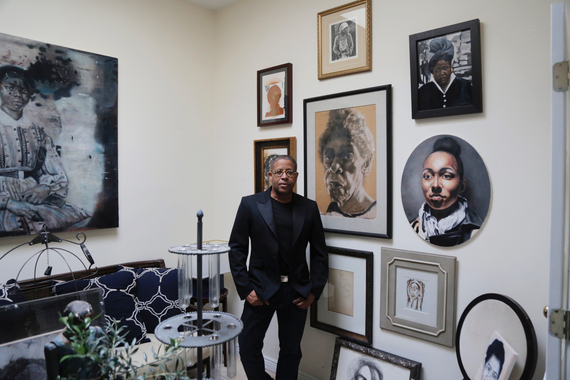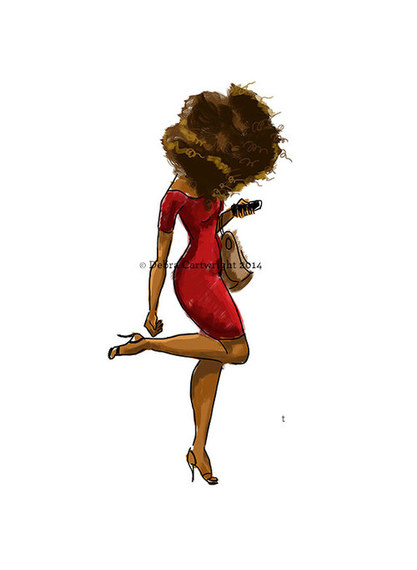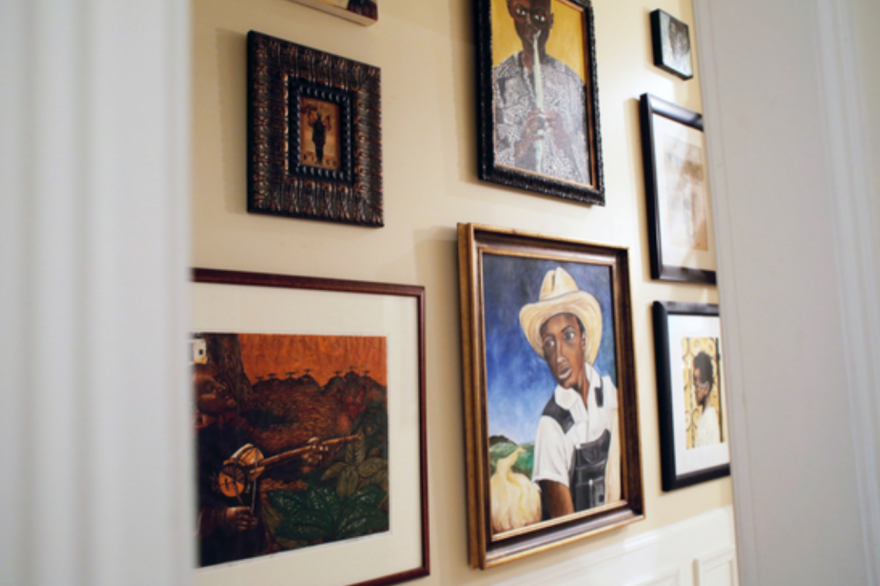2019 Update: In light of Prada, Gucci, and H&M’s blackface and monkey business, it is time for us to support black creatives and businesses like: Nubian Skin, Harlem Haberdashery, Fenty Beauty, Louis Stewart, Vashti Harrison illustrations, SPGBK watches, The Crayon Case, Coco & Breezy Eyewear, and other black-owned beauty brands. Pay full price like you do at a department store. Shout them out and tell friends. Respect their craftsmanship and artistry. Don’t use their words, images, photos, or lyrics without permission. Don’t repost their work without giving them credit. If we want to bring back Black Wall Street, support and respect black artists and businesses’ copyrights and trademarks. Black Wall Street was not limited to the incident in Tulsa. Post-Civil War and throughout the Civil Rights movement, most major cities in America had a Black Wall Street with black lawyers, doctors, dentists, bakeries, salons, newspapers, and businessmen catering to the black community in a world where “whites only” and segregated restaurants, transportation, and housing were the norm. The only place that they didn’t mind integrating were the nightclubs. Our contribution to origin of country music (DeFord Bailey) not acknowledged. “They want our rhythm but not our blues.” They said blues, jazz, soul, rock-n-roll (Sister Rosetta Tharpe and Big Mama Thorton), and hip hop was “colored/race” music. Yet, jazz was used the American government to spread democracy during WWII. Look at the major record studios and who owns them – Sam Cooke stand against record studios. They laughed at us for breakdancing on cardboard in the street. Now breakdancing is mainstream dance curriculum and its competitions are big money, but our community isn’t seeing any of it. We don’t own our stuff! Stuff we created, made famous and popular. They took rights and ownership of music that we created, which is why Prince fought hard to earn the rights to his music,calling record contracts slavery. Even our black bodies are copied and profited for gain through cultural appropriation and blackfishing. We created soul food and southern cuisine, but how many of us do you see on the cooking television shows? They want our political votes and consumer dollars, but when we want solidarity against police brutality and racism, they respond All Lives Matter.
The arts enrich our lives so much. When tyrants and dictators want to control a society they begin by censoring the press, banning books, and raiding museums of artifacts and works of art. Nina Simone said, “It is an artist’s duty to reflect the times.” Maya Angelou said, “When a writer or an artist tries to tell the truth and tries to tell it eloquently, it appeals to all people, regardless of race.” It is no wonder that dictators take great pains to burn books and destroy art in attempt to erase history and silence the voice of the people.
Many rappers talk about Basquiat to prove that they “have arrived.” I wonder how many of its listeners know the significance of Basquiat and other black artists or even own their works? Aside from Ernie Barnes, whose work was featured in the sitcom Good Times, and Annie Lee, I was not familiar with other African-American artists and painters. After viewing an exhibit of Romare Bearden, I looked into more African-American artists like Archibald Motley, Jacob Lawrence, Jonathan Green, Edmonia Lewis, and Carrie Mae Weems. Unfortunately, many of the great black artists’ works are privately owned and not by us.
I recently spoke with painters Raub Welch and Debra Cartwright. I asked them to address the importance of blacks: 1) investing in black art; 2) supporting black artists; and 3) blacks not stealing and appropriating the work of black artists. Raub Welch is a painter and interior designer based in Chicago. His work has been exhibited at the DuSable Museum and around the world. His home doubles as his art gallery and as such has been featured in many publications. Debra Cartwright is a painter and graphic designer based in New York. Her work has been featured in Ebony and her designs have been commissioned by McDonald’s in its sponsorship of the Essence Festival. She has exhibited at the Sol Studio in Harlem.
How did you get started?
Debra Cartwright (DC): I was constantly painting and drawing Disney characters. My mom wanted to put me in extracurricular for the weekends. People ask why watercolor? It was the class that had openings. But, isn’t watercolor everyone’s first introduction to art and painting? Graphic design pays the bills. Being a painter and illustrator is my passion.
Raub Welch (RW): I always wanted a beautiful life and to travel. I didn’t want to be a starving artist. Although I had work as an artist, I couldn’t live off it. Even if you exhibit and your pieces sell, the gallery takes 50-60% for commission. I had to do something to support myself in between gallery exhibits. I got a retail job and started decorating store displays. I begin hosting parties at my home. People were so impressed with my décor that they asked me to decorate their homes.

Painter, Raub Welch. Photo Credit: Devin Mays
What was your big break?
DC: Most people knew me through my “protest” art. After Trayvon Martin and Michael Brown, I painted “Don’t Shoot.” McDonald’s contracted with the advertising firm Walton Isaacson for Essence Fest. They wanted to use a black illustrator. Tracey Coleman saw my “Don’t Shoot” painting on Instagram and reached out to me.
RW: My mentor bought me gallery space in Wicker Park to display my art. One day, an art buyer for Oprah walked into the gallery and bought some of my work. It was a collage piece. It’s ironic because I am a painter, but I am best known for my collage work. That restarted my art career. However, I still do interior design because it’s cash flow between exhibitions.

Artwork of Debra Cartwright
Why is it important for blacks to invest in black art?
DC: There is not enough exposure in our community to black artists. When my fans/followers ask who my influences are and I name black artists, they do not know who these artist are. Exposure to art is not as prevalent in our community. Also, a lot of black art has been appropriated by white artists.
RW: As a black artist, I cannot stress how important it is for black people to support black artists and buy their work. You may not buy a Basquiat, but you can buy original works from a local artist. Major works of black art are not owned by us. We don’t own our on legacy and history. My daughter goes to gallery showings with me. Art is an equity investment. If we don’t own our own history, do our children even know their legacy? Buy original works and buy what you love. Buy the best piece you can afford. Collecting 101.
What about people who say that art is too expensive?
DC: Art is an appreciating asset. Unlike a car that depreciates as soon as you drive it off the lot, art is an investment that increases in value. Invest in art you like. Buy original pieces.
RW: People say art is expensive. Yet, we buy Tom Ford, Ferragamo, Versace, and Gucci. I like beautiful things too, but which one appreciates in value? Art is an equity investment and legacy piece. It increases in value as it decorates our wall. That’s why Jay Z buys Blue Ivy a Basquiat – for legacy. She may outgrow her Tom Ford clothes but her Basquiat continues to increase in value. It is part of pop art American history and black American history.

Artwork of Debra Cartwright
Debra your artwork is widely shared on social media and often plagiarized and illegally used. Why is it important for people to not steal artist’s work without permission and give credit when they repost or share?
DC: When I first started, I didn’t think about that until later someone stole “appropriated” my work as their own. I learned the hard way that artists need to protect their work from exploitation. I do not mind showcasing my work, but you must balance what’s fair versus exposure. You need protection from online pirates. We [black people] are so used to our stuff being stolen [music, culture] that we devalue our own work if it’s not stolen. We have more respect for other artists than black artists. Someone told me that they loved my work so much that they put it on a t-shirt and started selling it! That’s illegal. Everyone understands that you can’t use the Louis Vuitton or Versace logo for personal profit. Yet, people become upset at me when I tell them they can’t use my work. I have to protect my intellectual property and copyright. People erase my watermark to infringe. I have to hire lawyers to send copyright infringement notices. Even if I get a judgment in my favor, I still lose because most of these people have spent the money they illegally earned from using my images. It’s like being a baker and having your bread stolen every day. At some point, you decide to stop selling bread. I put my blood sweat and tears in my work, so please respect and honor that by paying and getting permissions and proper licensing to use my work. The theft of my artwork becomes too emotionally and legally draining that I do not have the energy to be a creative voice for my people and generation. In the end, we all lose – the artist, black culture, and society.
Raub, final words?
RW: As black people, we have a duty to share and protect our heritage and legacy. If all of the black art is own by non-black private collectors, then we lose. We must make a conscious choice to buy black art.
To support Raub and Debra, be sure to check out Debra’s website, Debra Cartwright, and Raub’s Instagram for Very Raub Studios.
Also published on Huffington Post.
